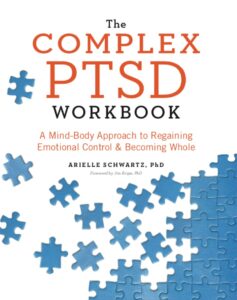
What makes you unique? Perhaps you or your parents grew up in another country. You might learn differently or have grown up speaking a different language. Possibly you have two moms or two dads. Maybe what makes you different is the color of your skin or your religious beliefs. If you sometimes or often feel that you don’t belong you are in good company. One third of the people in the United States currently identify themselves as a member of a racial or ethnic minority, an estimated fifteen percent of the U.S. report being inter-culturally married, and approximately four percent of the U.S. identify as LGBTQ.
“Why address diversity in therapy? Because failing to acknowledge cultural differences in clients ignores critical information necessary for competent psychological practice. It is my responsibility as a person in a position of power to protect the rights and to be an advocate for people who may feel disenfranchised or marginalized. It is an honor that I take seriously.”
-Dr. Arielle Schwartz
This week I have another opportunity to speak on a topic that I love. Embodied Culture. Why embodied culture and not simply culture? As human beings we live life through our senses. Embodied culture looks at how aware we are of how culture shapes us and how culture is inscribed in our bodies. Embodied Culture is the marriage between the field of somatic or body-centered psychology and the field of multiculturalism.
Embodied culture is how we adapt to and are shaped by the groups that we are a part of. This is acquired over time and is both consciously adopted and passively “inherited.” For example: We observe our family members, their body language, and their mannerisms. We behave, adopt gestures, and mirror postures as a way to experience our belonging in the world. Overtime our repeated behaviors become our routines; our habits. Our habitual ways of being in the world also shape how we perceive the people around us.
Embodiment provides information about how we interact with others. You witness the facial expressions and body language of another person. You sense how they move through space, the pitch in the voice, the quality of emotion. Pay attention and you can sense the impact of another person in your own body.
Without awareness, unconscious embodied cultural inheritance and influence can be the root of prejudice, discrimination, stereotyping, and harm.
With awareness, embodied culture can become the root of empathy.
As part of my doctoral studies I looked at practicing psychologists’ beliefs and practices related to multicultural competencies. This study helped us learn two things:
As a result, we identified a significant blind spot within the field of psychotherapy; the need for clinicians to increase their self-awareness when it comes to multicultural competence.
What does it mean to recognize or take responsibility for your own cultural conditioning? As therapists if we are uncomfortable with difference we may inadvertently avoid discussing cultural differences in therapy. We have our own comfort zones, our own biases, and our own insecurities. It is very tempting to disregard difference and as a result we may over-emphasize similarities with our clients. Being culturally competent does not mean that you are perfect, it means that you are willing be in the conversation about difference, and are willing to acknowledge and repair mistakes when they occur.
Take embodied culture beyond the therapy room and into the world. (This exercise was developed by myself and my college, Barb Maiberger, MA, LPC for our presentation on Embodied Culture and EMDR Therapy at the EMDR International Association conference.)

Connect to this post? The Complex PTSD Workbook, is now available on Amazon! Click here to check it out and increase your toolbox for healing. Whether you are a client or a therapist this book will offer a guided approach to trauma recovery.

Dr. Arielle Schwartz is a licensed clinical psychologist, wife, and mother in Boulder, CO. She offers trainings for therapists, maintains a private practice, and has passions for the outdoors, yoga, and writing. Dr. Schwartz is the author of The Complex PTSD Workbook: A Mind-Body Approach to Regaining Emotional Control and Becoming Whole. She is the developer of Resilience-Informed Therapy which applies research on trauma recovery to form a strength-based, trauma treatment model that includes Eye Movement Desensitization and Reprocessing (EMDR), somatic (body-centered) psychology and time-tested relational psychotherapy. Like Dr. Arielle Schwartz on Facebook, follow her on Linkedin and sign up for email updates to stay up to date with all her posts.

Arielle Schwartz, PhD, is a psychologist, internationally sought-out teacher, yoga instructor, and leading voice in the healing of PTSD and complex trauma. She is the author of five books, including The Complex PTSD Workbook, EMDR Therapy and Somatic Psychology, and The Post Traumatic Growth Guidebook.
Dr. Schwartz is an accomplished teacher who guides therapists in the application of EMDR, somatic psychology, parts work therapy, and mindfulness-based interventions for the treatment of trauma and complex PTSD. She guides you through a personal journey of healing in her Sounds True audio program, Trauma Recovery.
She has a depth of understanding, passion, kindness, compassion, joy, and a succinct way of speaking about very complex topics. She is the founder of the Center for Resilience Informed Therapy in Boulder, Colorado where she maintains a private practice providing psychotherapy, supervision, and consultation. Dr. Schwartz believes that that the journey of trauma recovery is an awakening of the spiritual heart.